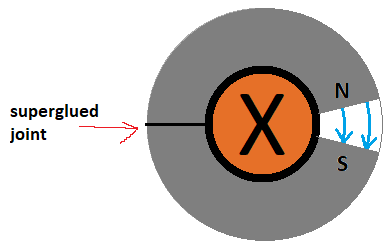I was thinking about electromagnets today and a thought popped up in my mind on what would be a very simple way to create an electromagnet.
Although I have not built and tested it, I am pretty sure that it will function as an electromagnet even though it will be a lot weaker in magnetic strength than a standard electromagnet.
Below is a drawing I made of this very simple design. The working principle is that an iron washer is cut in half and then one half of that iron washer is superglued to an insulated, current carrying straight conductor/wire. The half iron washer will function as an electromagnet when electrical current is applied to the wire.
Would this simple design function properly as an electromagnet?


